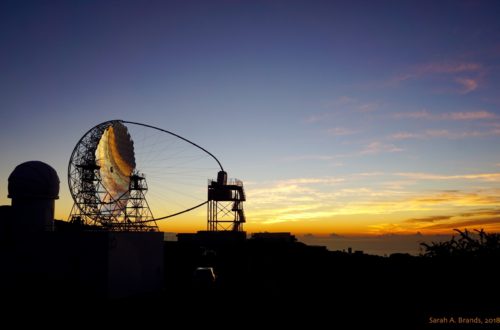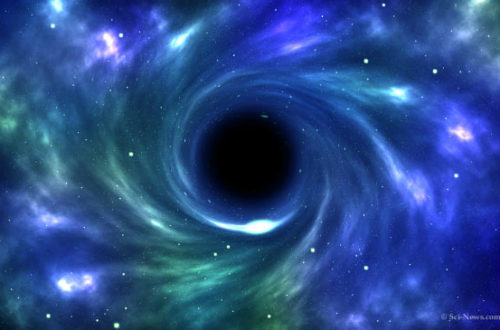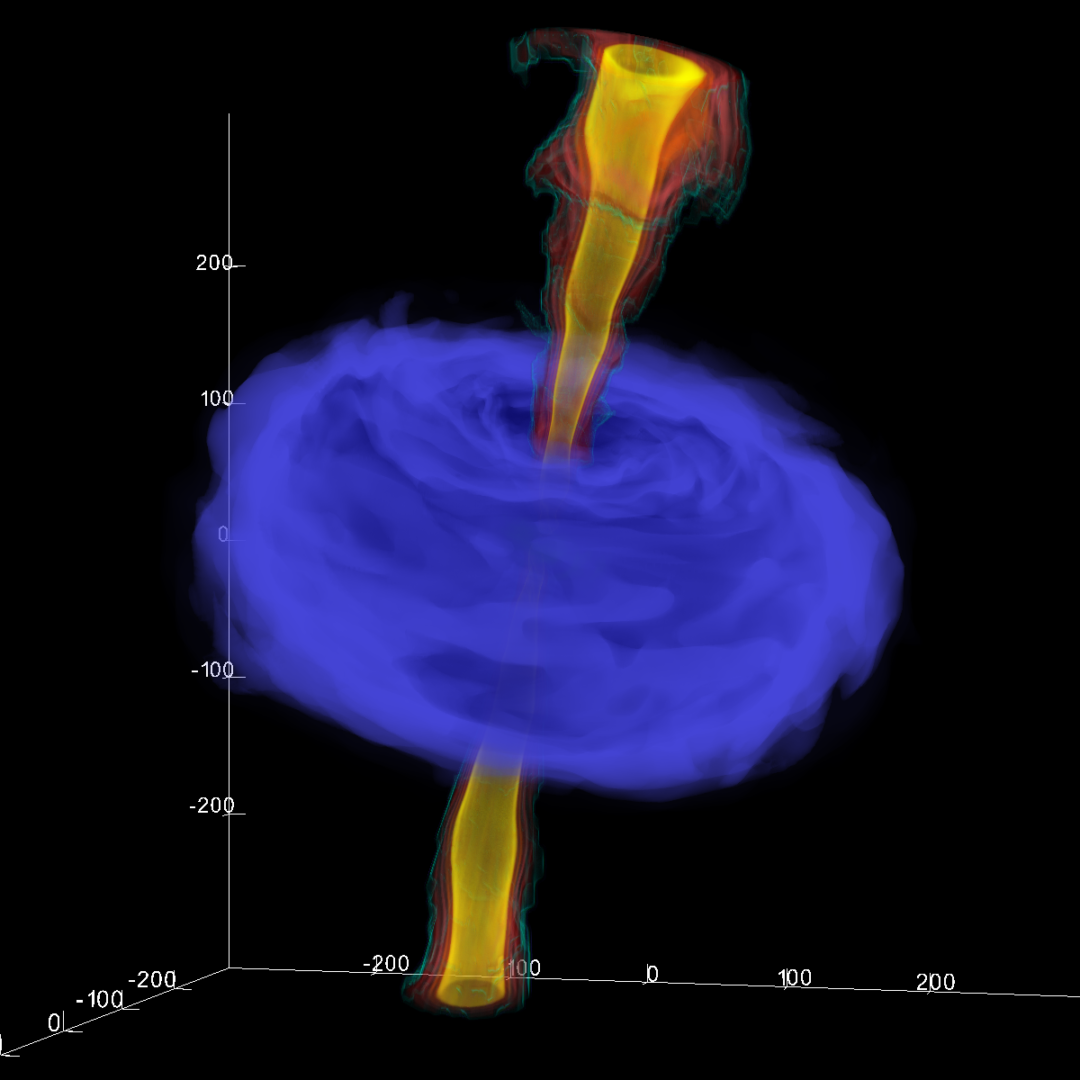I’m Dr. Felicia Krauss and I have been working in Amsterdam for two years. I focus on multimessenger and multiwavelength aspects of black hole systems; Galactic black holes (~10 times the mass of our Sun) and supermassive black holes (One million to 1 billion times the mass of the Sun; this equals the total mass of a small galaxy within a tiny region at the center of these systems). Supermassive black hole systems are often called active galactic nuclei (AGN), because they are very bright and located at the center of their galaxy.
Both types of system are very similar. The black hole is a central engine that uses fuel (stars and gas). Some of these systems produce a stream of particles and light that is sent outwards. At the moment I work on supermassive black hole systems and their outflows. What is an outflow?
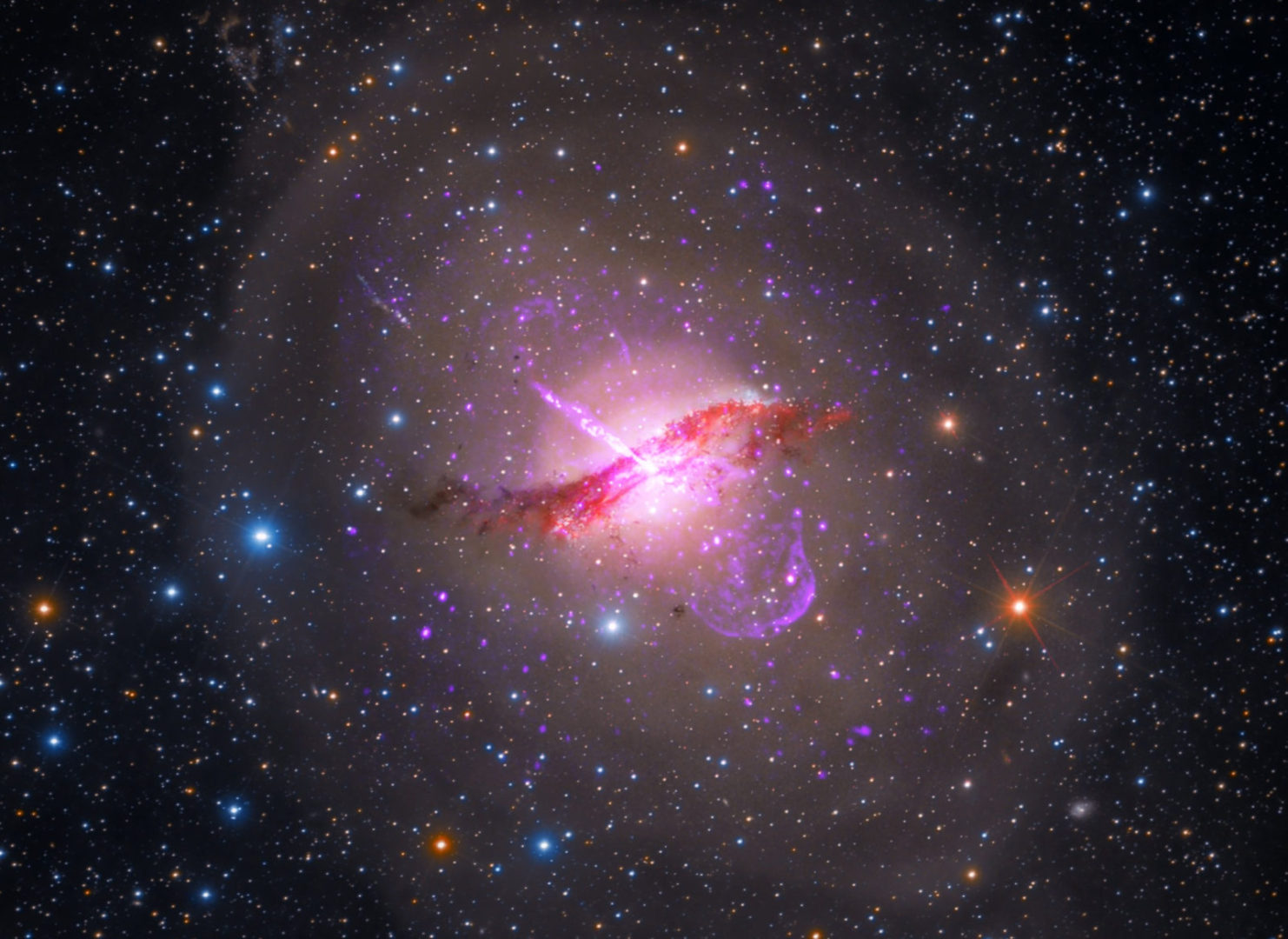
First, the outflow is produced near the black hole, but it does not come out of the black hole, (almost) nothing can leave the event horizon of a black hole! But what is this outflow?
The best way to think about this is a water hose: The stream of water coming out of the hose is the stream of particles and light that we see from outflows in these systems. After a certain point of traveling, the surrounding matter becomes more dense and the stream cannot continue. The resulting phenomenon is called “lobes”, and often “radio lobes”, because they are seen particularly well at radio frequencies. Imagine the hose of water being aimed at a wall, the lobes are the resulting splash pattern.
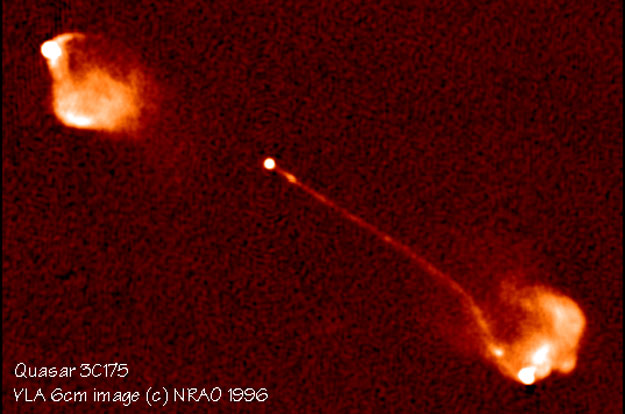
These outflows of matter are called “jets”. I’m fascinated by the difference in sizes: a black hole system (even of a supermassive black hole) is very small (think: black hole the size of our solar system), but the resulting jet and lobes can stretch over and influence the development of the whole galaxy, and its surrounding medium. Or in other words: the time it takes light to travel from near the black hole to the lobes can take tens of thousands of years to a million years. And at this point, the light has not even reached us yet. It has to travel a few more million – billions of years.
This also makes these systems ideal probes of cosmology; what did the universe look like that long ago?
The surprising thing to me is how much we do not know yet about jets:
– Which particles are inside the jet and what produces the light we see?
– How are jets launched, where does the energy come from?
– Where is the high-energy emission produced?
– How do jets stay collimated (narrow) and bright for such a distance
– How do supermassive black holes form? (The age of the Universe is not sufficient to grow them slowly by feeding them stars.)
My work focuses on the highlighted questions, which I will introduce briefly below:
In order to find out which particles are inside a jet, I study sources where the jets points at Earth. We call these sources blazars. Ideally, we would be able to directly receive these particles and then identify them. This is not possible for charged particles, as they are deflected in magnetic fields, so they travel somewhere else, before our satellites and ground-based experiments can detect them. But, we can study other “messengers”, such as neutrinos. These are neutral particles that do not interact with matter a lot, so we do not find many of them per year. Finding neutrinos from blazars gives us strong evidence for protons in jet. I have previously on worked on neutrinos from blazars. But this work will be extended to include smaller black hole systems. Can we also find neutrinos from Galactic black holes? Are the neutrino production mechanisms the same as in AGN systems (see this post)?
I further study where the high-energy emission is coming from. We observe X-rays and gamma-rays (very energetic light) from these jets, but it is not clear if this is produced near the black hole, in the jet, or only in the lobes. We use spectral information from these sources (see also this blog post), as well as high-resolution imaging at radio frequencies (see this blog post). This is complemented by numerical simulations, which study jet dynamics.
How do supermassive black holes form and how and when does a jet begin? In order to answer this question I look at peculiar sources, blazars or other supermassive black hole systems that behave differently. One of these sources is PMN J1603–4904, its behavior is consistent with it begin a young system, where the jet has not reached its full length yet. It is an interesting system which raises more puzzling questions. This source is considered a “young jet source”, meaning, we can directly study what we observe from it now, versus what we see in the “grown-up” version of jets.
Other peculiar sources include IC 310, a supermassive black hole system that shows rapid “flares” (it suddenly increases in brightness and then just as quickly becomes dimmer). This source helps us to understand acceleration mechanisms near the black hole.
For fun, I occasionally calculate weird scenarios. Many are nonsense or unpublishable but I try to put them on my blog. I’m also active on Twitter and happy to answer blazar questions there or per e-mail!

